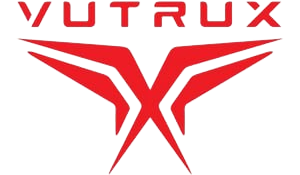- 11/04/2024
- admin
BINCHOTAN CHARCOAL OF JAPANESE OAK WOOD
INCHOTAN CHARCOAL OF JAPANESE OAK WOOD
Binchotan Oak Charcoal
Bincho-tan charcoal or white charcoal, also known as bincho-zumi charcoal, is a traditional Japanese charcoal.
It originated in Edo, when an artisan named bitchu-ya chozaemon began producing charcoal in Tanabe, Wakayama.
The raw material used is ubame oak (Quercus Phillyraeoides)
How to make
Binchotan white charcoal is made by carbonizing oak wood at moderately low temperatures.
Near the end of the process, the furnace temperature is increased to above 1000°C, causing the hot coal to turn orange-yellow.
The red-hot coals are quickly removed from the furnace and cooled quickly.
The rapid rise in temperature, followed by rapid cooling, burns away the outer layer of the wood leaving behind a hard, smooth surface.
Cooling powder is a mixture of sand, soil and moist ash, which results in a bright white color on the surface of the coal.
Characteristics
Binchotan charcoal is as hard as steel , with a smooth surface when cut.
When two Binchotan charcoal sticks hit each other, they make a clear metallic sound.
Binchotan white charcoal with a carbon density of more than 95% is an excellent electrical conductor.
Oak wood has a porous structure, containing a variety of minerals that have been absorbed throughout the life of the tree.
Just 1 gram of Binchotan Charcoal contains billions of pores.
This total pore area can cover a tennis court of more than 260m2 .
Benefits
Binchotan white charcoal has various benefits.
Its branches can be used to filter tap water.
Binchotan has an alkaline effect, softens and improves the overall taste of water.
Warms the body and helps improve blood, skin and hair circulation when added to a bath.
Binchotan absorbs moisture from the air then releases it when conditions become drier.
Charcoal absorbs unpleasant odors, so it is used in bathrooms, refrigerators and shoe racks.
Water purifier
Perhaps the greatest gift of Binchotan charcoal is its absorption of harmful substances from various environments.
When soaked in water, binchotan charcoal can purify water and enrich water at the same time.
Inside the pores are countless microorganisms that are harmless to humans and can decompose and destroy any toxic elements.
From chlorine to trihalomethane, while releasing good minerals such as calcium, iron, magnesium and others.
Blood cycle
Infrared rays are similar to electromagnetic waves absorbed by the human body in the range of 4 – 50 micrometers.
Binchotan charcoal releases infrared rays in the range of 4 to 14 micrometers.
Their bodies heat up and their blood circulates when exposed to these infrared rays.
Therefore the human body can fully benefit from this absorption.
Great Cooking Fuel
Binchotan exhibits high heat and is always stable, food is thoroughly cooked while still retaining its natural, gentle and delicious flavor.
The best grill restaurants in Japan use binchotan white charcoal for the best results.
Additionally, Binchotan charcoal emits negative ions while purifying and balancing moisture in the air.
Recent research shows that electromagnetic waves emitted from computers and mobile phones are harmful to the human body.
Charcoal burned at high temperatures from 1000 0 C like binchotan has the ability to absorb electromagnetic waves.
Flower Garden And Field
Ashes or small pieces of binchotan charcoal are placed in flower gardens and fields.
Helps regulate the air in the ground while helping microorganisms become more active.
As a result, the soil is enriched and the fruit crop will grow better and more fully.
Binchotan charcoal absorbs ethylene and ammonia gases, so it helps maintain freshness in vegetables and fruits.
By absorbing heat and moisture, binchotan white charcoal repels termites from wooden basements.
We always listen to all of your comments and questions.
Thank you for your interest in following the article!

